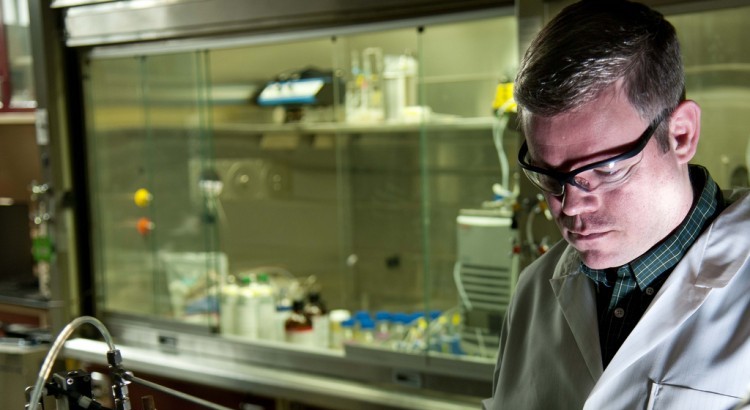
If you are using a touchscreen devices to read this now, you are actually using in the real world today, what was in the past, a possibility in sci-fi movies only. Expect more such items to materialize into our everyday lives soon, thanks to graphene.
With the production of graphene made possible, science is about making some of the most unimaginable gadgets a common experience in our lives in a matter of one decade or less. So you’re wondering what graphene is?
Well, before I tell you what graphene is, and how this awesome material was produced by a scientific method called mechanical exfoliation, I’ll give you a simplified list of some of the most exciting possibilities that graphene brings us.
- Replaces your touchscreen technology, making it possible to have something like “e-Paper.” This will have the ability to display interactive and updatable information.
- Flexible, ultra-thin electronic devices, including portable computers and televisions.
- Even cleaner water. Water that is about 8 to 10 times cleaner than the cleanest water you have today. This is made possible because of the ultra-filtration powers of graphene.
- Faster, cheaper and safer air travel: since aerospace engineers are currently incorporating more carbon, for its strength and lightness, into the body of aircrafts, to reduce the use of steel, graphene comes handy. Graphene is light, stiff, and cheap to produce, also, it can be engineered into the body of aircrafts to work as electrical sensors that give pilots more control in flight, prevent electrical damages resulting from lightning strikes, and making air travel safer.
- Paper-thin and ultra-light, almost weightless, batteries that lasts even longer, for your devices, such as smartphones, laptops, tablet PCs and the likes. And then comes cheaper too.
- The bioengineering possibilities of graphene are pretty enormous. Graphene may be put to use for the purpose of tissue regeneration, antibiotic or even cancer treatment, and it would make a good candidate for use developing quick and efficient devices using bioelectric sensors, able to keep track of things like glucose and hemoglobin counts, monitoring cholesterol, or even DNA manipulation, possibly by 2030.
- Smaller and more flexible flash memory, by combining the semiconductor mineral Molybdenite (MoS2) together with layers of graphene. A team of researchers at the École Polytechnique Fédérale de Lausanne (EPFL) in Switzerland already prove that this is possible.
Graphene, which is a carbon allotrope, one atom thick and two-dimensional, is an ultrathin form of carbon with exceptional electrical, optical, and mechanical properties. The versatility of graphene’s properties makes it suitable for the many possible uses.
Graphene is lighter and stronger than almost any other material, and it conducts electricity and heat more effectively than almost anything, which means that it can be utilized in multiple and diverse applications. Graphene was created artificialy when scientists broke down a sample portion of graphene and took it apart layer after layer until there was just one remaining. The procedure for doing this is referred to as mechanical exfoliation. Graphene is merely the thickness of one atom, making it thinner than any other material able to maintain stability outside of controlled lab conditions.
After the success with the production of a layer of graphene, which is the first 2-dimensional material, attention has since moved to producing more 2-dimensional materials. Such 2D crystals as Tantalum (IV) sulphide, Niobium Diselenide and Boron Nitride are able to be combined with other similar crystals for innumerable application. In fact, there are possibilities for creating other new materials by layering other compounds with graphene. So graphene can be utilized to create a type of scaffoding on an atomic level which can be used to engineer other materials. Newly created compounds like this could also be superlative materials, just as graphene is, but with potentially even more applications.
Graphene does have some issues to be resolved. The problem here is that high-quality graphene conducts electricity almost too well, and isn’t as controllable. Think of not being able to switch off your lights at home once switched on! So for graphene to be any useful in creating all these awesome devices, scientists will have to find ways of engineering a control system into it. This controls the mobility of electrons to the same point as seen in semiconductors such as films of strained silicone. So, until this control system is set up, graphene can not be or do all the nice things it can be or do for us.
Three other researchers, along with Nuh Gedik and Alex Frenzel, from MIT have been able to find an answer to graphene’s challenge. Now, the electrical conductivity of graphene may be controlled. This is done by using an extremely short, but intense light pulse.
These MIT researchers figured that they can modulate the electrical conductivity of graphene in order to effectively alter graphene’s photoconductive properties from semiconductor-like to metal-like.
A little trouble might be looming in the corner for the solution that the MIT researchers might have found. That is the fact that resent discoveries reported January 2015 show that light, after all, doesn’t always travel at the speed of light. Significant effect of this irregularity can be felt the most on short and intense light pulses. Since the work of Alex Frenzel, Nuh Gedik and their friends depend on short, intense light pulses, this might pose a reason for a rethink.
Whatever the current challenges stopping us from benefiting from the blessedness of graphene and other 2D materials, we are closer than ever to turning improbabilities to realities. We are at the brink of materializing what were at best, only possibilities.
By A. James
Sources:
Graphenea
ScienceDaily
Kurzweilai
MIT
ScienceNews
Image courtesy of Tom Faulkner – Flickr License

